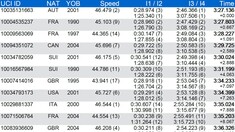In the evolving landscape of enterprise application development, SAP’s Clean Core approach enables customers building scalable, maintainable, and future-proof solutions. It emphasizes keeping the SAP S/4HANA core system clean of custom code and extensions, providing the guidance and the path for pushing such customizations to the Business Technology Platform (BTP). In this context, Redis on SAP BTP emerges as a powerful enabler for Clean Core adherence — enhancing performance, backend protection, and helping reduce total cost of ownership (TCO).
This post explores how Redis on SAP BTP, an in-memory cache service known for its speed and versatility, complements the Clean Core principles on SAP BTP.
Understanding the Clean Core Principles
The Clean Core philosophy promotes:
Minimizing custom code in the SAP core (S/4HANA).Leveraging SAP BTP for extensions, side-by-side applications, and innovations.Ensuring upgrade compatibility and operational stability.
To achieve this, enterprises must offload processing and data handling away from the core. Redis, as a cloud-native service on SAP BTP, can help in achieving this separation effectively.
Redis: A Clean Core ally
Redis on SAP BTP can serve as a central caching and transient data layer, which is essential for modern SAP extensions. Here’s how it can support the Clean Core approach:
1. Performance Acceleration with Caching
SAP backend systems can be burdened with frequent reads for non-critical data such as configuration, product lists, or metadata. Offloading these to Redis allows:
Millisecond response times.Reduced pressure on core resources.Improved user experience in frontend apps (Fiori) or custom BTP services.
Example: Use Redis to cache product availability data in an e-commerce extension instead of querying the S/4HANA system repeatedly.
2. Backend Protection with Rate Limiting and Queuing
Redis supports structures like token buckets and queues, which can protect backend systems from unexpected load surges:
Implement dynamic rate limiting to throttle requests to SAP S/4HANA APIs.Use Redis streams or lists as buffer queues for processing backend-intensive operations asynchronously.
Example: Protect an order management system by queueing bulk order uploads in Redis, then processing them in controlled batches, for simple scenarios, for more complex and critical scenarios please check SAP BTP Event Mesh.
3. Transient Data Handling for Microservices
Typically Clean Core-aligned applications are stateless microservices running on SAP BTP. Redis can act as a session store, short-lived cache, or inter-process communication layer, enabling smooth service orchestration without bloating the SAP core.
Example: Use Redis to temporarily store workflow state transitions in a BPM-like extension until they’re finalized and written back to SAP.
4. Supporting Clean Core with lower TCO
Running Redis on SAP BTP helps to ensure:
Managed service with autoscaling, reducing infrastructure overhead.Serverless and cost-efficient usage patterns, especially for caching-heavy use cases.Separation of concerns: offloading computation and storage to Redis reduces costs for high-throughput backend operations.
By smartly caching and decoupling operations, organizations can reduce the number of backend calls, ultimately lowering SAP API consumption costs and database load.
Conclusion
Redis on SAP BTP is more than a high-speed cache service — can be a enabler component for implementing Clean Core-aligned architectures. It boosts performance, protects backend systems from overload, supports stateless application design, and lowers TCO.
In the evolving landscape of enterprise application development, SAP’s Clean Core approach enables customers building scalable, maintainable, and future-proof solutions. It emphasizes keeping the SAP S/4HANA core system clean of custom code and extensions, providing the guidance and the path for pushing such customizations to the Business Technology Platform (BTP). In this context, Redis on SAP BTP emerges as a powerful enabler for Clean Core adherence — enhancing performance, backend protection, and helping reduce total cost of ownership (TCO).This post explores how Redis on SAP BTP, an in-memory cache service known for its speed and versatility, complements the Clean Core principles on SAP BTP.Understanding the Clean Core PrinciplesThe Clean Core philosophy promotes:Minimizing custom code in the SAP core (S/4HANA).Leveraging SAP BTP for extensions, side-by-side applications, and innovations.Ensuring upgrade compatibility and operational stability.To achieve this, enterprises must offload processing and data handling away from the core. Redis, as a cloud-native service on SAP BTP, can help in achieving this separation effectively.Redis: A Clean Core allyRedis on SAP BTP can serve as a central caching and transient data layer, which is essential for modern SAP extensions. Here’s how it can support the Clean Core approach:1. Performance Acceleration with CachingSAP backend systems can be burdened with frequent reads for non-critical data such as configuration, product lists, or metadata. Offloading these to Redis allows:Millisecond response times.Reduced pressure on core resources.Improved user experience in frontend apps (Fiori) or custom BTP services.Example: Use Redis to cache product availability data in an e-commerce extension instead of querying the S/4HANA system repeatedly.2. Backend Protection with Rate Limiting and QueuingRedis supports structures like token buckets and queues, which can protect backend systems from unexpected load surges:Implement dynamic rate limiting to throttle requests to SAP S/4HANA APIs.Use Redis streams or lists as buffer queues for processing backend-intensive operations asynchronously.Example: Protect an order management system by queueing bulk order uploads in Redis, then processing them in controlled batches, for simple scenarios, for more complex and critical scenarios please check SAP BTP Event Mesh.3. Transient Data Handling for MicroservicesTypically Clean Core-aligned applications are stateless microservices running on SAP BTP. Redis can act as a session store, short-lived cache, or inter-process communication layer, enabling smooth service orchestration without bloating the SAP core.Example: Use Redis to temporarily store workflow state transitions in a BPM-like extension until they’re finalized and written back to SAP.4. Supporting Clean Core with lower TCORunning Redis on SAP BTP helps to ensure:Managed service with autoscaling, reducing infrastructure overhead.Serverless and cost-efficient usage patterns, especially for caching-heavy use cases.Separation of concerns: offloading computation and storage to Redis reduces costs for high-throughput backend operations.By smartly caching and decoupling operations, organizations can reduce the number of backend calls, ultimately lowering SAP API consumption costs and database load.ConclusionRedis on SAP BTP is more than a high-speed cache service — can be a enabler component for implementing Clean Core-aligned architectures. It boosts performance, protects backend systems from overload, supports stateless application design, and lowers TCO. Thanks for reading!For more insights from the product team on Redis on SAP BTP, don’t miss to read:Redis on SAP BTP – INDEX of official blog postsRegards, Antonio Read More Technology Blog Posts by SAP articles
#SAP
#SAPTechnologyblog












